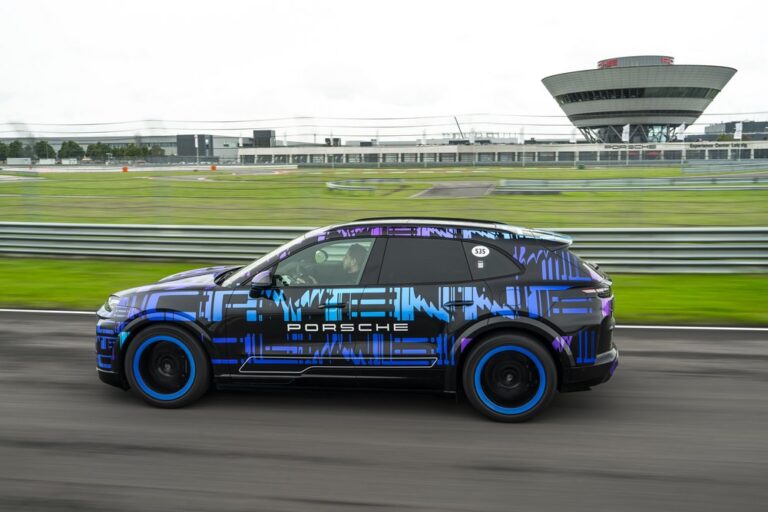Some electric cars are about as exciting as washing machines. The Porsche Cayenne Electric is not one of those cars. Having recently attended a technology workshop at the company’s Leipzig Experience Centre, I’m still getting my head around the experience: not only is the upcoming SUV exceedingly rapid, it has a lot more going on than pure speed.
During my day I got a deep dive into what makes this SUV so great, and there’s lots of good stuff to report.
Off-road capability

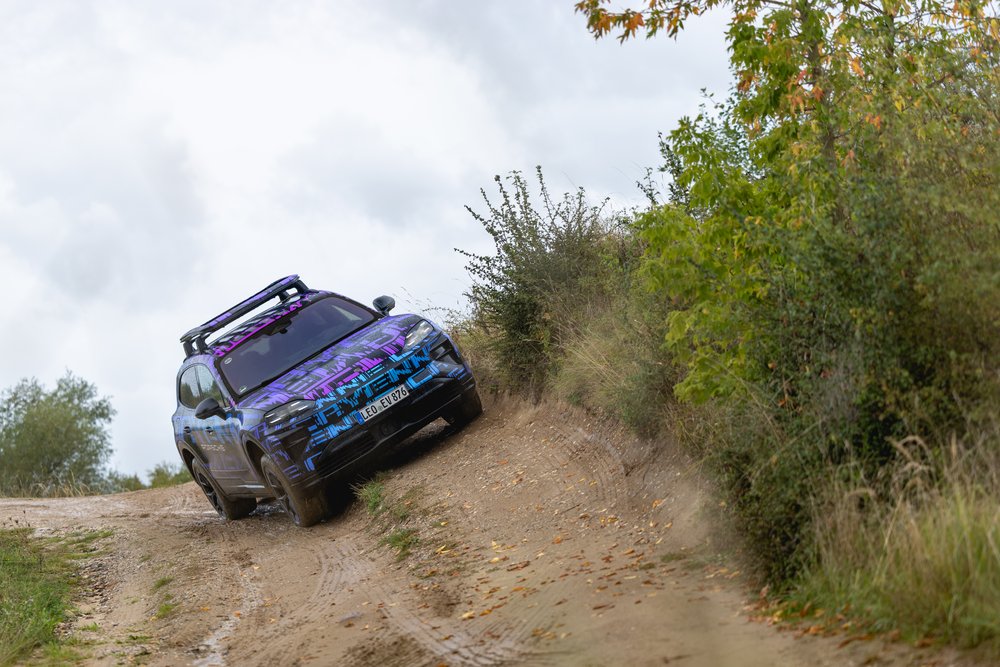
While it could be said that most posh SUVs don’t generally go anywhere near soft stuff, the Porsche Cayenne Electric does feel like it’s going to be a more than capable off-roader. A Porsche driver drove me around an off-road course that took in all manner of obstacles: there were ridiculous gradients and narrow, boulder-strewn lanes that would have had a regular Cayenne owner sweating bullets.
However, the Cayenne Electric got over, under and through everything in its path without ever once grounding or giving up the ghost. For a heavy vehicle, the torque on tap for getting up a ridiculous incline made the effort involved seemed minimal. There are multiple views on the infotainment screen, which means that it’s possible to keep an eye out for random objects that might be eyeing up a pristine panel or two for impaling.
Mind-blowing performance
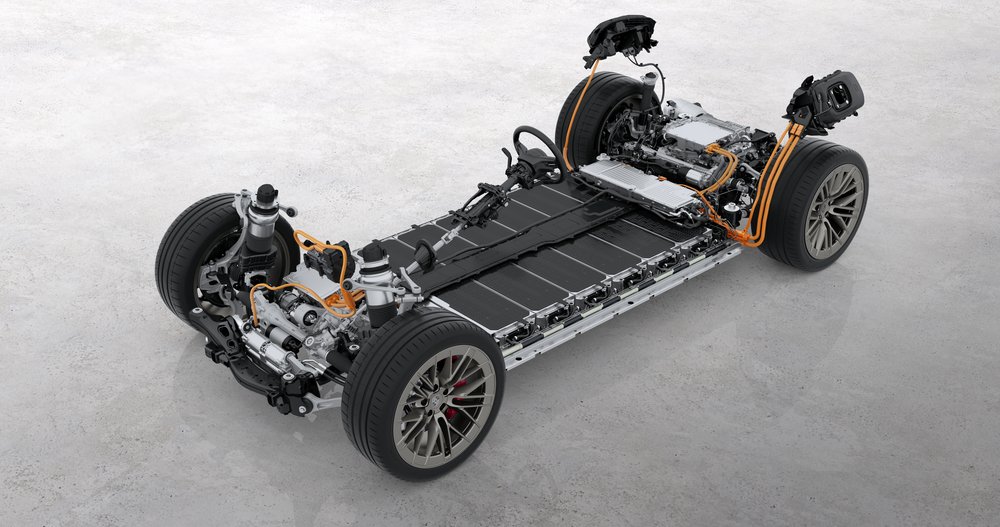
Of course, an absolute highpoint of the day was the lap or two around the test track. The drive system setup of the Porsche Cayenne Electric is quite something. Even though I was in the passenger seat rather than behind the wheel, the SUV delivered lightning quick super sports car performance. It can accelerate from 0 to 62mph in under 3 seconds, get from 0 to 120mph in less than 8 seconds, and onto a top speed over 160mph.
The newly developed drive system plays a major part in this, incorporating over 1,000PS and offering 1,500Nm of torque. Porsche engineers have worked long and hard to increase operating efficiency by up to 98 percent, even bringing direct oil cooling over from the motor racing world. The setup can dissipate heat created by the battery and electric motor combination. The regenerative brakes also claim impressive energy recuperation of up to 600 kilowatts.
Incredible handling
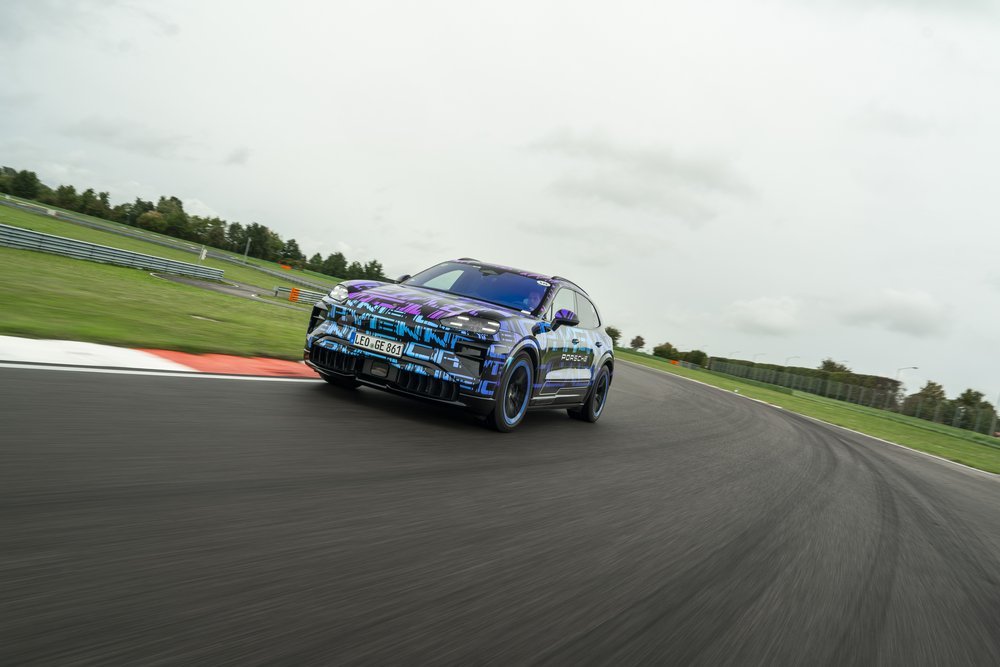
It’s a big, heavy SUV, but that doesn’t mean the electric Cayenne has lost all its Porsche DNA. There’s adaptive air suspension with electronic damper control, plus the all-new Porsche Active Ride, which dynamically adapts to the way the SUV is being driven and manages to keep the body level no matter how much it is being thrown around.
I experienced this going around the track and it certainly lived up to my expectations. Add in huge ceramic brakes and you’ve got a monster that can stop just as quickly as it starts.
Tech-packed interior

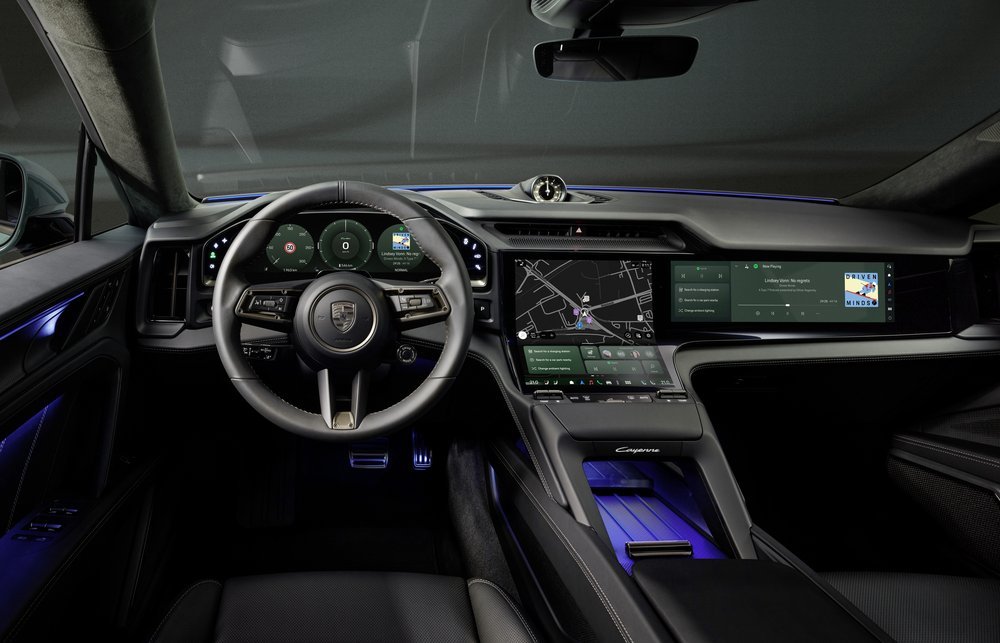
The Cayenne’s interior, which was revealed for the first time as part of the event, looks typically Porsche in many respects. Devotees should not feel disappointed. I also thought it felt exceptionally comfortable, thanks in the main to all-new 14-way adjustment Comfort Seats, which also get massage functionality. The new addition of a head-up display featuring augmented reality will surely smarten up the driving experience, too.
Fans of screen real estate will love the expansive new dashboard and infotainment area of the car, dubbed the Flow Display. The curved OLED design certainly looks good, although I’m yet to be convinced about the need for an interactive screen on the passenger side. Porsche engineers pointed out the merits of passengers being able to enjoy high-speed gaming using a controller. But, with most kids preferring their own phones or tablets, I can’t think this will ever truly exploit the potential of the computing power behind that delicious frontage.
Wireless inductive charging
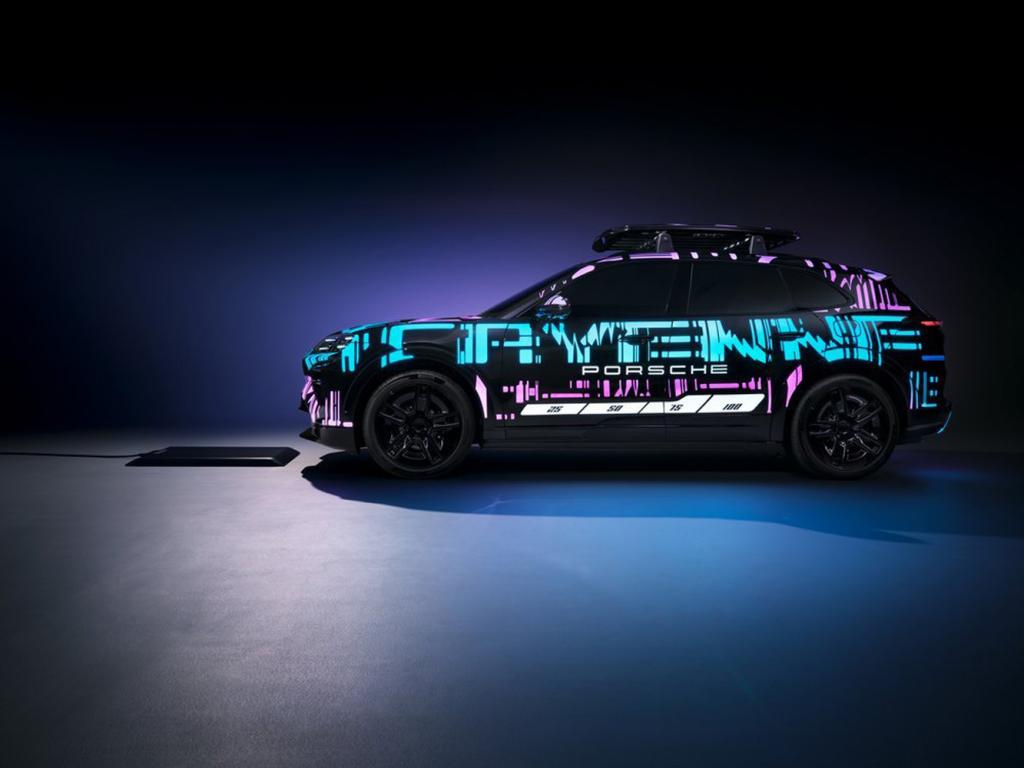
According to some of the engineers I spoke to, the Cayenne Electric’s optional wireless inductive charging tech took around five years to reach production-ready polish.
The 11kW charging system uses a flat panel, weighing about 14kg, which lies on the floor of a garage or drive. This needs to be professionally plumbed into household electrics in the same way as a conventional home wall charger. There’s also a component that receives the wireless charge that needs to be bolted to the underside of the car to complete the connectivity.
Once everything is in place, the charging procedure is a doddle. Owners simply need to slowly approach the charging pad while a menu option in the Surround View parking assist shows guiding lines until the car is directly over the charging spot. Once this has been located, within a small tolerance, the SUV locks on and charging begins.
The One-Box charging idea is certainly an interesting one. It is also, I think, quite expensive at around €7,000.
Lots to look forward to
While I’m still not convinced by the inclusion of a screen on the passenger side of the dash on any car, let alone something as tasty as this, the rest of what I saw during the tech day visit was mightily impressive. All that torque should make the electric Cayenne very versatile too, with a towing capacity of 3.5 tonnes. Plus, the 113kWh battery should make it practical enough for longer journeys even when the performance is being tapped into.
Adding to the appeal on that side of things is the 400kW charging potential. Expect 10 to 80 percent, or roughly 186 miles, added in around 10 minutes. That’s rapid enough, I think.
Read the full article here
